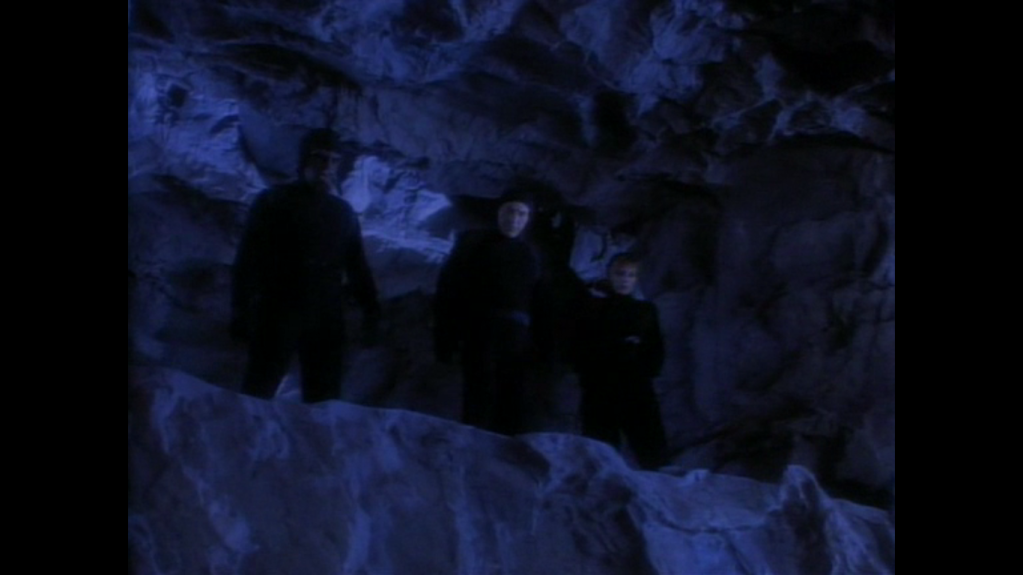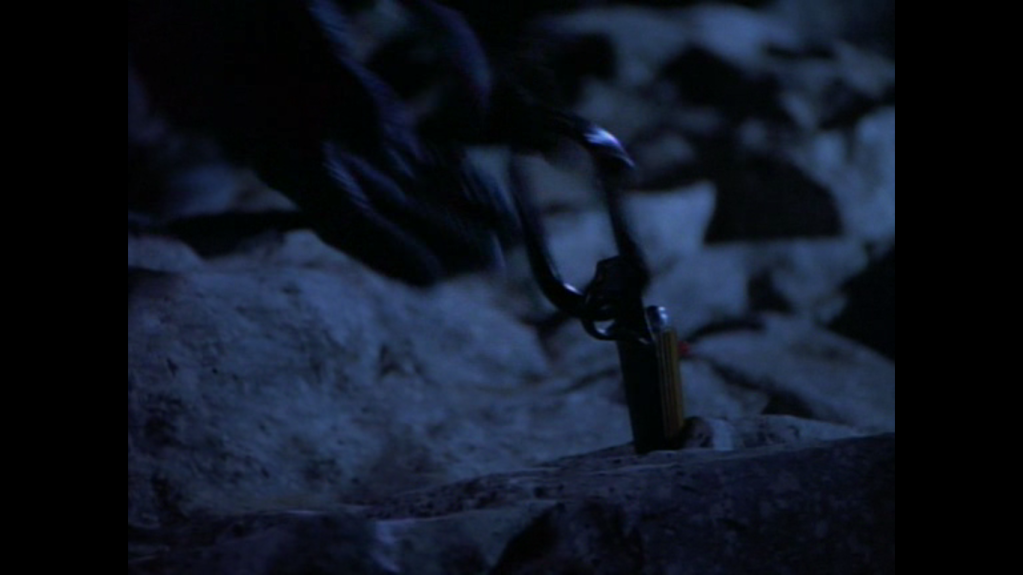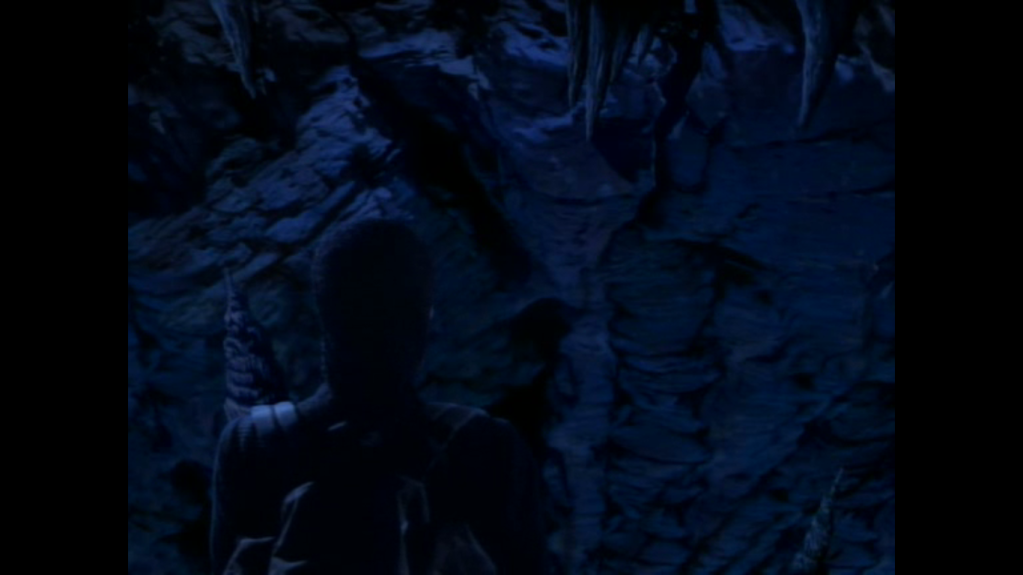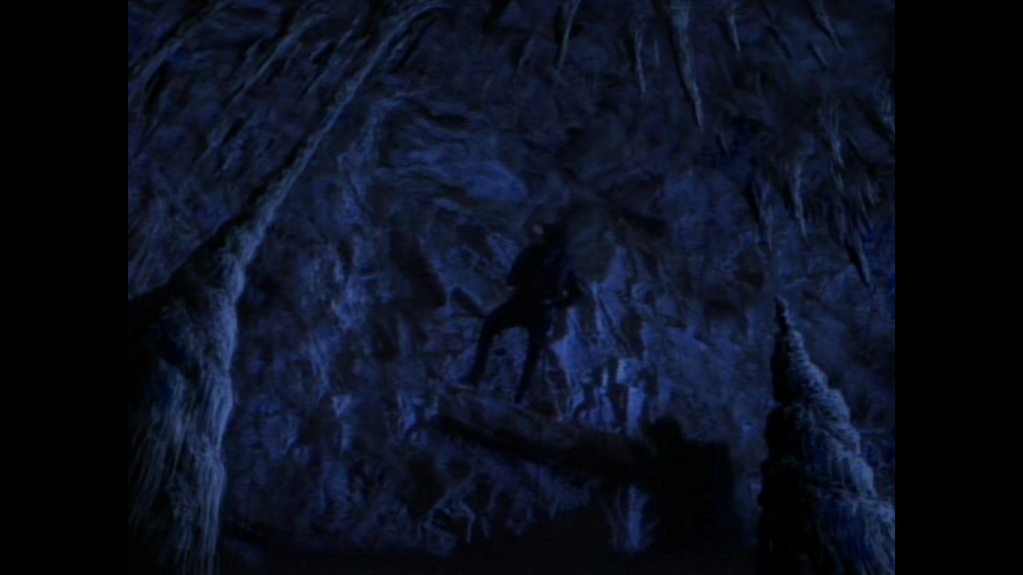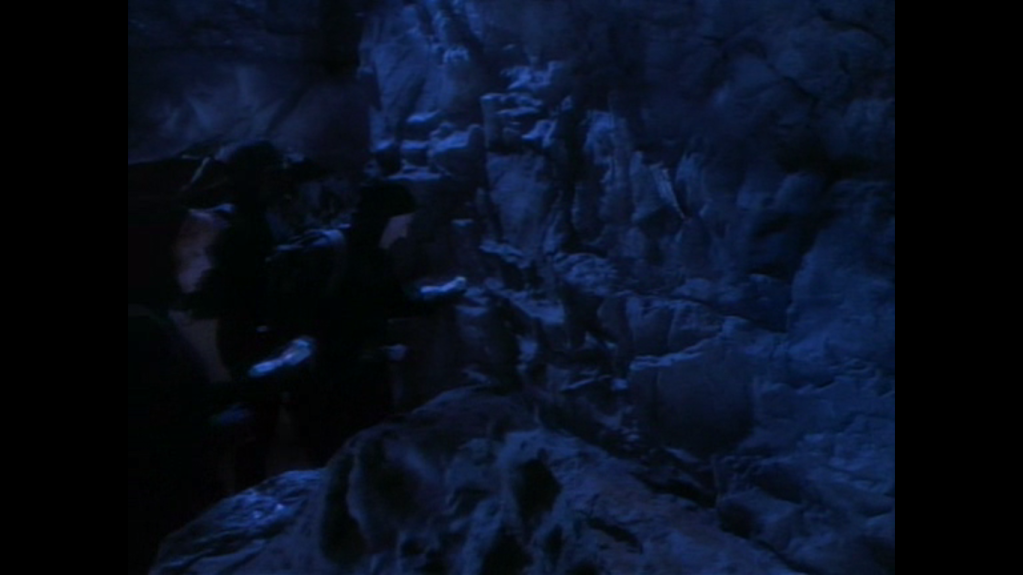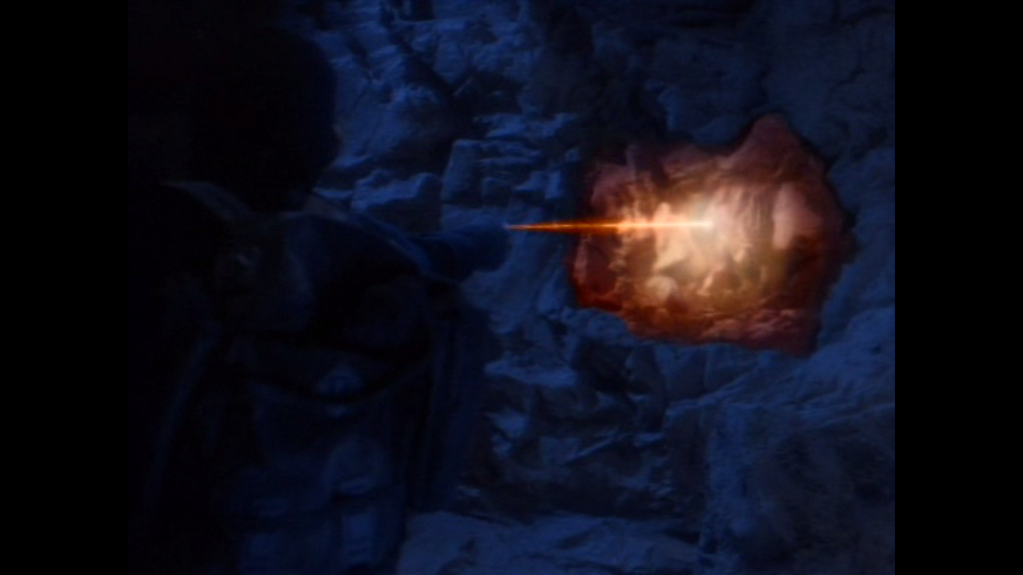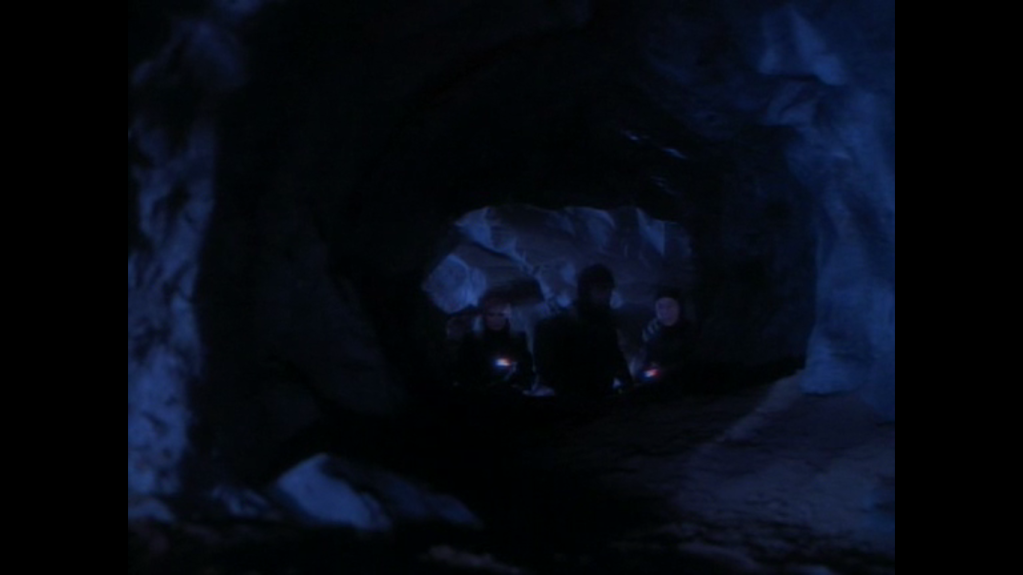 |
| Above photo (of DVD cover) taken from Amazon.com. |
|
I just realized that today is the last day of November and that I have yet to post my Bad Geology Movie of the Month! I can’t let November pass by without a movie, so for this month’s movie I’ve selected one of my all-time favorite Bad Geology movies- “Magma: Volcanic Disaster.”
Before I give my review, let me explain a little more about the Bad Geology Movie of the Month. First of all, what is a bad geology movie? A bad geology movie is any Hollywood-style flick with a geological theme. Many bad geology movies are mainstream films such as “The Core”, “Deep Impact”, “The Day After Tomorrow”, “2012”, and “Dante’s Peak”. Others are made-for-TV (often for the SciFi or SyFy channel), low budget flicks that often copycat mainstream movies. For instance, there were several copycat, made-for-TV “Journey to the Center of the Earth” movies made the same year that the high-budget Brendan Fraser flick was released.
So, why do I call these movies bad geology movies rather than just geology movies? This is because, in most cases, Hollywood geology is just that- bad geology. Scientifically inaccurate geology. Exaggerated geology. Stereotypical and skewed geology (and geologists). Some geology movies do better than others at staying true to geological science, but most do fairly poorly. Many geology movies have completely ridiculous geology- giant crystals growing in cavities deep in Earth’s mantle, dinosaurs living at the center of the Earth, Hawaiian-style lava erupting from a Cascade-type volcano, complicated geophysical models programmed in mere seconds by hero geologists, neutrinos heating up Earth’s core, and so on.
However, despite the abundant bad geology in these movies, I absolutely love geology-themed Hollywood-style flicks. I have an extensive collection of bad geology flicks, and I am always on the lookout for more flicks to add to my collection. The $5 movie bin at Wal-Mart is one rich source of bad geology movies. My family usually gives me 1 or 2 bad geology movies for Christmas, and others are loaned or sent to me by scientist friends who know my interest.
I like bad geology movies because they are entertaining (they spice up the science!) and can inspire people to become interested in real science. For instance, I first became interested in geology when as a young child (perhaps 5 or 6) I watched the 1950s Disney movie “Journey to the Center of the Earth.” This movie is an absolute gem of gems in the bad geology movie category. Pat Boone sings his way to the center of the Earth with his companions! With an accordion! I will most certainly write a review of this movie another month. I loved this movie as a child- I used to watch it every single time I visited my grandmother’s house. A few years ago, my mom bought me a DVD of the film, so now I can watch it whenever I want. The movie is scientifically inaccurate in countless ways, but despite that the film sparked my interest in real geology and now, many years later, I am a geologist. I suppose I also like bad geology movies because they make me feel smart… I can debunk Hollywood geology! Yay!
Of course, the bad geology in these flicks can be dangerous, like all misrepresentations of science in Hollywood. But the bad geology is not all bad. Some geology professors actually have their students debunk the bad geology in these movies. I’m not convinced that this is the most efficient way to teach geology, but I can see how it is fun and useful. In a geology class made up mostly of non-majors, debunking the bad geology in movies is actually very practical. If students aren’t going to go on to become geologists, much of the “geology” they encounter may very well be filtered by Hollywood. If they can learn a little geology and use this knowledge to evaluate the accuracy of Hollywood geology, all the better.
Also, I do want to cut Hollywood a little slack. Movies need to be fast-paced and entertaining. Science, including geology, can at times be too slow-paced and boring for Hollywood. I can understand how Hollywood distorts geology to make it more interesting and fast-paced. Many weeks, I know, my geology consists of not-so-thrilling activities such as picking tiny crystals under the microscope for hours or applying statistics to a set of data. Even in the field, I often spend hours measuring things and sampling a sequence of rocks painfully slowly. Science requires meticulous care and documentation, and that can take time and can, indeed, be boring.
However, I’d also argue that science- real science!- can also be amazingly cool. I think that it is totally possible to write an entertaining, geologically-accurate movie script. In fact, that is on my to-do list- one of my many things I want to do after I graduate and am a bum for a little while. I’m moving abroad (my fiance lives overseas) and need to go through immigration, so I’m using this as an excuse to take a few months off and do things like brush up on a couple of foreign languages and write a geology movie script. I’ll probably just watch television and go rock climbing and hiking all the time, so we’ll see if the script ever materializes.I hope it does.
Although Hollywood science has an abysmal reputation when it comes to being scientifically (in)accurate, there is some good science in Hollywood and also some hope for Hollywood science. I highly recommend that you check out The Science and Entertainment Exchange, a forum for science and entertainment professionals to exchange ideas and knowledge. This exchange aims to make the science in movies more accurate and also to help scientists become better at explaining their science to a general audience.
Back to the bad geology movies, though. I have found that the *best* bad geology movies are the ones that are most entertaining: either because the thriller (but often scientifically flawed) plot is well-written and well-acted and has you biting your nails (even if you *know* Earth’s core can’t do whatever it’s doing to destroy the planet) or- more commonly- because you find the movie hilarious because of a scientifically ridiculous plot, poor acting, poor special effects, and stereotypical scientific characters. Most bad geology movies are “serious” movies though a few (and I have to admit, these are probably my favorites) are more light-hearted- such as the two Disney versions of “Journey to the Center of the Earth.” Unfortunately, some bad geology movies are just bad. They are not entertaining at all- they’re just mediocre and boring. They’re not good enough to be thrillers and they’re not bad enough to be funny. They’re just sort of “meh” with some bad geology thrown in.
In order to review several aspects of each bad geology movie, I am going to rate each movie (from 1 to 5 stars, whatever a star is… not really a scientific unit of measurement, but I’ll go with it) in several categories:
Category 1: Quality of Movie Production
This will give you a sense of if this film is low budget or high budget. If low budget, this will give you a sense of just how low budget. Low budget is not necessarily bad, though… it can be very, very funny!
Category 2: Quality of Acting
I am not an actress, so this rating will be very subjective. Basically, this rates how good a job the actors and actresses did with a script that may or may not be well-written and may or may not be scientifically accurate/plausible.
Category 3: Accuracy of Geology
My assessment of the scientific accuracy of the science in each movie. I welcome input on this from other geologists, since I am not an expert in all fields of geology.
Category 4: Entertainment Value
Sure, the production quality may be poor and the acting crap and the geology nonsensible… but is the movie entertaining? Does it make you laugh because of its sheer ridiculousness? Often, the worst of the bad geology flicks are actually the most entertaining.
For all of the bad geology movies I review, I encourage you to watch them and reply in the comments with your own reviews. Perhaps you can help me catch more of the scientific inaccuracies as well as help me praise those rare times when Hollywood is accurate in its geology.
Without further ado, on to this month’s movie review….
******************************
Magma: Volcanic Disaster
Year Released: 2006
Release Format: Television movie by Sci Fi Pictures
Quality of Movie Production: 1 out of 5 Stars
Quality of Acting: 2 out of 5 Stars
Accuracy of Geology: 1 out of 5 Stars
Entertainment Value: 5 out of 5 Stars
Movie Quotation:
“Our survival as a species is dependent upon our ability to understand and adapt to the planet’s ongoing evolution. Hence, volcanology– despite Mr. Taylor’s earlier assertion to the contrary– has nothing to do with Mr. Spock or the Starship Enterprise. Rather, it is the study of the Earth’s blood pressure.” — Dr. Peter Shepherd, “Magma: Volcanic Disaster”
Note: I am going to ruin any movie surprises below… but don’t worry: even if you know the entire plot, you will still find this movie hilariously entertaining!
Movie Description:
Dr. Peter Shepherd (played by Xander Berkeley of 24 fame), a volcanologist and professor of geology at Mount Raven University, takes a group of graduate students to Iceland on a winter break field trip. The purpose of the research trip is to test Shepherd’s theory that the Grimsvotn Volcano (an actual volcano in Iceland… well, actually a series of lakes above a volcanic fissure) is millions of years older than previously thought. Shortly before the trip, the Trollsvotn Volcano (as far as I can tell, not a real volcano) erupted “suddenly” after lying dormant for 700 years. So, a secondary purpose of Shepherd’s trip is to understand why there is “suddenly” an increase in volcanic activity in Iceland.
The day before the research trip is scheduled to leave, a cute, bubbly, high heel-wearing female graduate student named Brianna “Bree” Chapman (played by Amy Jo Johnson, the Pink Power Ranger!) enters Shepherd’s classroom and inquires if she can join the research expedition. Shepherd tries to wave her off with sexist remarks, implying that the field work will be too difficult for her and that his male graduate student (CJ) only told her about the expedition because he was hitting on her. Bree persists, saying that she is a geochemist and that she heard that the expedition geochemist dropped out last minute. Finally, Shepherd agrees to take her as long as she doesn’t expect a recommendation letter or college credit and also if she buys her own plane ticket.*
The next morning, Bree meets the rest of the expedition team at the airport (well, a field… but presumably an airport field). Before she arrives, we are introduced to Shepherd’s other graduate students: two male graduate students who- seriously- look and sound more like those guys from Jersey Shore or- to be a little nicer- members of a boy band such as ‘N Sync than they do geology graduate students. The names of the ‘N Sync graduate students are CJ and Kai. The third male graduate student is a guy named Jacques who- from his name and slight English accent- I presume is supposed to be French. Upon seeing the attractive Bree approach, Jacques says to CJ: “It’s a good thing to see you’re still doing your part in putting the T & A back into being a TA.”All I can say about that line is: AWESOME. Awesomely sexist, that is.
On the plane to Iceland, the graduate students start revealing some of their geologic knowledge (or lack thereof). They are all idiots- except, perhaps, for the English/French one. The Pink Power Ranger says something along the line of, “So why are we going to this Iceland place, anyway…” One of the ‘N Sync grad students says, “Yeah.. all I know about Iceland is… Ice.” Another ‘N Sync graduate student says, “No- that’s Greenland.” The smartie French graduate student then explains that they are going to Iceland because 1/3 of all lava that’s ever flowed upon the Earth has come from Iceland. Okay, I’ve changed my mind. The French grad student is an idiot, too. Iceland has produced significant amounts of lavas over the years, but nowhere near 1/3 of the total amount of lava ever produced. I’d like to point out that Iceland is one of the most famous volcanic locations on Earth… any self-respecting geology graduate student should know at least something about Iceland.
Miss Pink Power Ranger tries to show her geological expertise when she comments that Grimsvotn Volcano hasn’t blown its top in 700 years… so why did it just erupt if it was dormant? Well, for a volcano 700 years isn’t a long time… barely any time at all! But no one answered her that way. Instead, Dr. Shepherd sort of shakes his head ominously.
Finally, the team arrives at the volcano. They leave one ‘N Sync graduate student at the top to monitor the volcano using magical “Thermal Activity” monitors (and I guess some seismics) that have impressive colorful, wavy lines whenever a volcano is just about to erupt. Cool- I want one of those monitors! Dr. Shepherd and the other graduate students descend into the volcanic crater to do research. Dr. Shepherd notices something that will help him date this volcano… an ammonite fossil!** This is exciting because it dates the volcano to the Mesozoic, if not the Devonian.*** Just as Jacques begins to chip the ammonite out of the volcano, one of the ‘N Sync grad students (I really can’t tell these guys apart… oh well…) warns the other three to evacuate the volcano as the “Thermal Activity” monitor has begun to go crazy. The horrible CGI lava effects begin… these are a recurring feature throughout the movie. In the opening sequence (which follows the early team at Trollsvotn), the scientists die by slipping and falling into the CGI lava. Pure awesomeness.
The group evacuates at the last minute by calling “Iceland Transport,” which consists of a few guys with distinctly American accents. The group flies back to America and watches the news about the Iceland eruptions on the way back. Shepherd is convinced that the eruption of *two* volcanoes in Iceland so close together cannot be a coincidence.
Back in America, Shepherd visits his friend and former advisor Dr. Oskar Valenteen. Valenteen informs Shepherd that he quit his job at the USGS (where the boss is jerk scientist Dr. Kincaid, also a former student of Valenteen). The reason he quit his job is thatValenteen was told by Kincaid that his “Exodus” theory was bogus. Shepherd expresses concern that the recent Iceland eruptions are evidence that “Exodus” has begun… but Valenteen points out that there have been other eruptions, starting weeks earlier… he ominously says that “This cannot be the start of Exodus… because Exodus already started.” Cue: ominous music!
So, what is the Exodus theory? Let me summarize it briefly: Because of radioactive pollution which has seeped (somehow, not exactly sure how) into Earth’s core, the core is expanding. This expansion of the core is putting extra pressure on the planet, causing every one of Earth’s 1500 volcanoes to erupt.**** Yes, that’s right… Pollution on Earth’s Surface –> Core Expansion –> Eruption of Every Volcano on Earth. AWESOME.
Concerned, Shepherd calls the government (The Bureau of Disaster Relief and Awareness) and explains his Exodus concerns to some FBI-looking guys. When asked what the worst case scenario is if the Exodus theory is right, Shepherd explains that it would mean the extinction of every living thing on the planet… in a matter of months. Kincaid, Shepherd’s nemesis at the USGS, is brought in to evaluate the Exodus theory.
Kincaid dismisses the theory at first, and meanwhile Shepherd and his graduate student boy band, power ranger, and Frenchie travel to a mine in Colombia/Ecuador (they say they’re going to Ecuador, but then the caption says they’re in Colombia… whatever, they’re in a generic Latin American country) to collect “proof” for the government. They go into some mine tunnels which have been closed due to “poisonous magma.” Deciding things have gotten too hot, CJ and Jacques stay to get some samples while Kai, Bree, and Shepherd evacuate. As they are sampling, Jacques and CJ realize that they’re not in a tunnel (it’s not on the map! gasp!) but rather in a lava tunnel… with lights… and beam supports…. and more lights… but a lava tunnel nonetheless! Jacques dies when he falls into the magma chamber. CJ’s leg is burned, but he is rescued by the others and left in a hospital in Colombia/Ecuador. Bree kisses CJ for some unknown reason, then she, Shepherd, and Kai return to the US to convince the government about Exodus with their new data. Kai analyzes the samples in Colombia/Ecuador (in the hospital, apparently?) and concludes that THE MAGMAS IN THE MINE CAME FROM THE CORE!
Meanwhile, Valenteen and his beautiful assistant travel to Japan because he believes Mt. Fuji will erupt very soon. Sure enough, Mt. Fuji erupts and Valenteen (and his assistant and many Japanese people) die in the eruption and ensuing Tsunamis. Also, Shepherd calls his estranged wife, who is a park ranger in Yellowstone. He warns her about Exodus and encourages her to evacuate Yellowstone because it will erupt.***** More volcanoes erupt, including Mt. Kilimanjaro in Africa.
Shepherd and the gang (minus Frenchie and CJ) return to the FBI-type guys and interrupt a meeting of Kincaid and his USGS team with the president. Kincaid now believes the Exodus theory, partly because of data he stole by hacking into Shepherd’s computer database. Shepherd argues that Kincaid does not have all the information. He then goes on to fully explain the Exodus theory. Shepherd starts out by explaining that the Earth’s core has expanded, creating fractures that are bringing core magma up to the crust and causing every volcano on Earth to erupt. Shepherd and his team can predict when every volcano will erupt because all volcanoes are linked by faults. At least, I think that’s the theory… I didn’t follow it very well. The President didn’t either, until the Pink Power Ranger piped up with another gem of a line, “Basically, it’s like the Earth is trying to get rid of a really bad case of double burrito indigestion.” The president says, “Now, her explanation I understand.” He agrees that Shepherd and his team need to figure out how to stop Exodus and save the world.
Don’t worry, though! Shepherd has a plan! His idea is that they select which volcanoes erupt to release the extra core pressure. Rather than have volcanoes erupt on land, he thinks it’s better to trigger underwater volcanoes to erupt. Obviously, the way to accomplish this is to fire nuclear missiles at the Mid-Atlantic and Mid-Pacific Ridges****** using submarines. The President and FBI-types think this plan is wonderful and the movie ends by Shepherd and Kai going on submarines while Bree coordinates things with the FBI guys. The missile launches are successful, but Kai dies when his submarine is hit (by an eruption, I think) and sinks to the bottom of the ocean.
The movie ends with the lava erupting, then subsiding, in Yellowstone (and presumably everywhere else on Earth). Shepherd and his wife get back together, and the movie ends by Shepherd explaining why he turned down Kincaid’s job at the USGS. He likes to teach, he says.
I presume the sequel (I propose the title: “Marine Magma: Climate Disaster”) will be about how the increased eruption of lava on the seafloor has caused the oceans to heat up and has interrupted the thermohaline circulation of the oceans. I really hope they cast the Pink Power Ranger again!
I highly recommend this movie. The bad lava special effects alone are worth it!
Here is a link to the movie trailer: “Magma: Volcanic Disaster” Trailer.
Footnotes:
*I have to say, the part about the plane ticket mystifies me because as far as I can tell they always take private planes everywhere in this movie… or at least a hallway decorated like a private plane….
**Volcanoes are not generally dated by fossils, which are mostly found in sedimentary rocks. Igneous fossils (I’ll blog about this another day) are actually very rare and usually involve people/animals/plants (such as the Pompeii fossils) that have been quickly covered by volcanic ash and preserved, sometimes only as impressions when they vaporize completely. Ammonites are certainly not found in volcanoes but rather in sedimentary deposits. To date volcanic rocks, scientists use radiogenic isotopes. K-Ar is useful one for volcanic rocks older than ~1 million years. Pb-Pb dating can also be used for older volcanic flows. For younger volcanic rocks, uranium-series isotopes can sometimes be used (up to ~350,000 years in age). Very young lava flows (less than 50,000 years old) can be dated by carbon dating of organic material trapped underneath lava flows and in volcanic ash. Isotope dating is complicated, but this is what is generally used to determine ages of volcanic flows, not fossil identification.
***The Devonian time period ranges from approximately 360 to 410 million years ago. Iceland isn’t this old… the oldest lavas are Tertiary in age (1.8 to 65 million years old).
****This number is actually pretty accurate, according to the Global Volcanism Program:
Number of Active Volcanoes. Although I would point out that this estimate does not include submarine volcanoes.
*****If Yellowstone ever does erupt, don’t bother trying to evacuate. I’d recommend staying and watching the show. It’s a supervolcano! Last time it erupted, animals as far away as Kansas were covered in ash. If it ever erupts again, the whole world will be in trouble and many, many living things will die. So, if you do evacuate from Yellowstone, maybe go to the moon? Or another planet?
******There is no Mid-Pacific Ridge. Nope.


